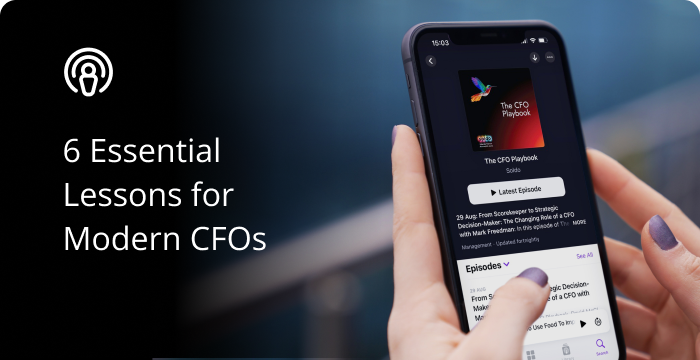How to take charge of your enterprise spend

When finance leaders talk about taking charge of how their enterprise spends, they often mean managing expense tracking, optimising budget allocation, or navigating procurement processes.
At Soldo, we call it decentralised spend management.
What is decentralised spend? It’s everything outside central procurement – tactical, discretionary spending made by employees across different departments, often on-the-go, or in urgent situations.
In the first part of this series, we explored how the manual processes involved in managing decentralised spend management can drain both time and resources. It’s a challenge worthy of solving because finance teams that should be focusing on higher-value, strategic objectives are bogged down by day-to-day tasks like reactive reconciliation.
In this second instalment, we’ll introduce the concept of “proactive programming” — an approach to decentralised spend management that gives business owners more financial control and more time.
By the end of this article, you’ll learn how to anticipate and control your spending, reduce inefficiencies and empower your teams.
Why reactive reconciliation doesn’t work
Before we explain what a proactive programming approach entails, let’s first explore its opposite: reactive reconciliation.
Businesses today manage their decentralised spend in a few different ways.
Procurement
Procurement brings structure and control to an enterprises’ large purchases and improve supplier management. It allows you to ensure you’re getting the best value for money and maintain a firm handle on your budget.
But shoehorning smaller, more urgent purchases can make you less agile. For finance teams, the procurement process can create bottlenecks. Approvals and paperwork-heavy workflows force them to work with outdated information, hindering their ability to respond to immediate financial needs.
Reconciliation is reactive, leading to delays in both purchases and financial reporting.
Spend management is slow.
Reimbursements
Reimbursement processes were initially designed as a simple way to allow employees to cover out-of-pocket expenses when on-the-go. It provides flexibility when your business needs it most.
But today, the reimbursement process can lead to resentment with employees unfairly shouldering the financial burden of their employers. For finance teams, the reimbursement process comes with administrative headaches – the constant need to track receipts, manually verify expenses, and reconcile reports.
Reconciliation is reactive because your expenses are only addressed after they’ve occurred, leaving finance teams scrambling to reconcile them and often resulting in delayed insights into cash flow.
Spend management is messy.
Petty cash
Petty cash was once a practical solution for small, everyday expenses that didn’t require formal approval. It helps your business keep moving forward.
But petty cash isn’t scalable enough for larger enterprises. For finance teams, tracking multiple petty cash boxes across different departments or locations becomes chaotic and, therefore, prone to error because it’s difficult to make sure that every transaction aligns with your spending policies.
Reconciliation is reactive because spend tracking doesn’t happen in real-time. Which means, your teams are always looking backwards when they should be making decisions about the future.
Spend management is inefficient.
The status quo of managing decentralised spend management with manual processes today is slow, messy, and efficient. So, how can you turn a reactive reconciliation approach into something that helps your business become more agile, orderly, and inefficient?
Introducing: Proactive programming for spend management
Proactively programming your spend management means taking control of your expenses before they happen, ensuring that every spending decision aligns with your business goals and policies.
It can make your business agile enough to seize new opportunities, orderly enough to find unexpected insights, and efficient enough to scale even while your competition stalls.
There are three phases to the proactive programming approach:
- Pre-spend: The rules you set to guide spending decisions before they even happen, ensuring everyone stays on track and budgets are protected.
- Spend: How you make spending easy and hassle-free so that employees can make the right purchases quickly, all while staying within the guidelines you’ve set.
- Post-spend: The way you automate reconciliation and get instant insights, so you can keep improving and fine-tuning where your spend goes, without the extra workload.
Each phase works together to ensure you have full control and visibility over your expenses, without the manual work that slows you down.
Now that you understand the framework, it’s time to put it into action. Let’s explore some practical steps on how to proactively program your spend and turn these concepts into reality for your business.
Putting proactive programming into practice
These actionable steps will help you take your spend management process from a reactive reconciliation approach to a more efficient, agile system that empowers your business.
Pre-spend: Set clear rules and controls
The first phase is making sure company-wide spending decisions are controlled right from the start.
You can start improving cost savings by setting spend limits for different categories (say, travel, office supplies, or marketing expenses) or establishing an approval system based on role or department (small purchases might only need manager approval, while larger expenses require sign-off from finance).
Automating these rules will help your finance team breeze through business purchase and expense approvals.
Don’t forget: Clearly outline these policies so employees follow them correctly.
Spend: Enable free but controlled spending
This phase is about striking the right balance between making payments hassle-free for employees but easy-to-control for your finance team.
You can do this by using corporate cards with pre-set limits. For example, you can assign your CMO Sarah a £5,000 limit and your Office Assistant Orla a £50 limit. That way, employees can spend freely without the need for constant approvals.
Virtual cards are also a good way to maintain control for specific purchases. They can be used for online subscriptions or one-off purchases and can be controlled, monitored, and cancelled at any time.
Lastly, invest in real-time tracking. You’ll get immediate visibility into expense claims that show you how funds are being used, and finance teams can step in if spending patterns deviate from the plan.
Post-spend: Gather instant insights
The real advantage of proactive programming is automatic reconciliation within a single source. It saves time and provides you with real-time insights into your finances.
Use mobile apps that allow employees to upload receipts in real time, automatically matching transactions with digital receipts. No more chasing down paperwork at the end of the month.
Centralising this information in a spend management software also allows finance teams to quickly identify trends or discrepancies before they become problems. With just a few clicks, they can generate reports on spending patterns, cash flow, and budget adherence.
It isn’t just about historical spending. Take the insights you gain from post-spend analysis back into your pre-spend planning to fine-tune your policies.
By implementing a proactive programming approach to your spend management process, you’re looking beyond the short-term fixes of reactive spending. You’re freeing up resources for growth, reducing waste, and supporting innovation.
Whether you’re looking to curb unnecessary spending, work around your procurement process, get a better understanding of your company spending, or make data-driven decisions, a proactive approach ensures you have the control and visibility needed to drive your business forward with confidence.
The benefits of business spend management are ready for you to unlock. Let’s make the most of it.






